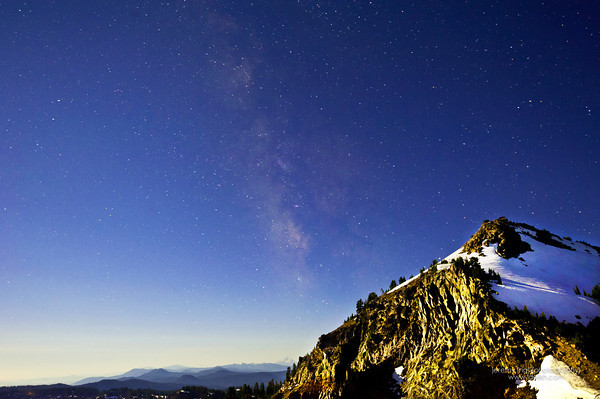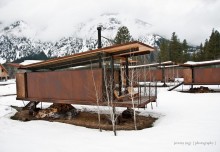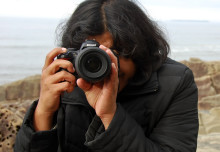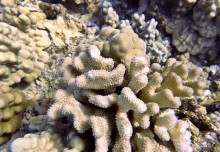A Lesson Learnt in Capturing the Elusive Milky Way
Many of us have at one time or another seen one of those beautiful artist renderings or photographs of the Milky Way. We have always thought that you either had to be a really good artist or a photographer with some super fancy gear to capture an image of the Milky Way.
But you know what? We recently learnt that you DON’T need super fancy gears to capture photographs of the Milky Way BUT you do need to choose a night without a full moon!
Just this past July, we decided to head to Crater Lake for a mini vacation. We realized that Crater Lake was perfect for spotting the Milky Way as it is far away from the city.
We needed to get far away from the city because you need your surroundings to be very dark with a clear sky in order to see the Milky Way. Being close to cities mean there’s always light coming from the buildings and streets which will interfere with your shots (escaping the light pollution is essential to photographing the Milky Way).
Even though we escaped the light pollution from the city, we were unlucky to have been photographing on a night with a FULL MOON! Needless to say, the light from the full moon made it very hard to get a good shot. The photo we captured showed only a faint trace of the Milky Way. Oh well. Better luck next time!
Here’s our first attempt at photographing the Milky Way at 1am in the morning on a night with a full moon (not advisable)!

Milky Way – Our first attempt at photographing the Milky Way at 1am in the morning on a night with a full moon! The Milky Way is a bit washed out due to the strong light from the moon on the left side of the picture. We experimented with a 5-image HDR for the foreground, overlaid with one Milky Way background. In the future, we’d prefer to have a darker foreground with complete focus on the Milky Way without light from a full moon. Better luck next time!
How We Photographed the Milky Way
We were very lucky to have been able to get ourselves a room at Crater Lake Lodge just a few days before we arrived due to a last minute cancellation by someone. You MUST book ahead of time if you want to stay at this lodge (the ONLY lodge that is situated on the Crater Lake rim).
1 IDENTIFY THE MILKY WAY USING AN APP
Long story short, Shirl and I dragged ourselves out of bed at 1am in the morning and using an Android app on my cellphone called “Google Sky Map“, we located the Milky Way.
On the app, look for the constellation called Scorpio (it is a neighbor of the constellation Sagittarius). Scorpio is made of bright stars with a fish-hook pattern like a Scorpion’s tail. The center of our galaxy is right near the tip of the Scorpion’s tail!
We soon found ourselves at a photo spot on the rim of Crater Lake with our camping chairs, a DSLR, a tripod and blankets. If you’re attempting this at Crater Lake, remember that it gets very cold and windy there in the wee hours of the morning. So dress appropriately.
2LOCATE THE MILKY WAY USING YOUR CAMERA
Because we couldn’t see the Milky Way with our naked eye, here’s what I did using my DSLR:
- Use a wide angle camera lens
- Set camera ISO to the highest it can go (i.e. 12800+ ISO)
- Set your exposure for about 3 – 5 seconds
- Set camera on a tripod
- Take pictures of the sky at roughly the spots where you think the Milky Way is according to the app
- Try different orientations (landscape vs portrait) and compositions
The pictures you take at this point will be very noisy but it will show you where the Milky Way is and it’ll help you adjust your camera on the tripod until you find the right composition.
3TAKE THE SHOT
Once you’ve identified the composition and orientation you want:
- Decrease your ISO to around 1600
- Increase your exposure to around 20 – 30s
- Take your shot, sit back and wait for the shot to complete!
Why 20 to 30s?
Why did I set my exposure to 20 – 30s? Basically, the Earth continues to spin as you’re sitting there, waiting for your camera to complete one shot. If you expose it too long, you’ll start seeing the stars “streak” since you would have moved along with Earth in that timeframe.
There are many mathematical calculations I won’t bore you with (look up the “600 Rule” for instance) to determine the exact maximum exposure you can set your camera to. However, the simplest rule I follow is that in 30 seconds, Earth turns by 1/8 of a degree. So to take a still shot of the stars, take it in 30 seconds or less.
Interesting Facts about the Milky Way
In the center of the Milky Way is what’s known as the infamous Black Hole where if you get too close, you’ll get sucked into infinity, never to be seen again. But don’t worry, we’re in no danger of plunging into it because we are 250,000,000,000,000,000 kilometers away!
Another interesting fact about the Milky Way is that it is warped. Imagine your parents’ old vinyl LPs, left out in the sun for too long. As it gets heated up by the sun, it’ll get twisted. The Milky Way has a similar warp!
Have you photographed the Milky Way before? What are some tips you can share with readers wanting to give it a go?
20 Comments
-
I guess so… wishing to visit Crater Lake one of these days. As I observed your pic posted, the milky way above is just like within reach. So lovely!
-
Author
We highly recommend a visit during summer. Definitely plan ahead as the accommodation right on the rim is very limited. We hope you get to visit and get a chance to photograph the milky way too!
Jeremy & Shirlene recently posted..{Indonesia} Snake Skin Fruit (Salak) – Must Eat Fruit in Bali
-
-
Thats a stunning capture!! And some cool information and advise to go with it 🙂
Arti recently posted..Of… Love, Lights and Joy: Diwali Diya Memories
-
Author
Thanks Arti! We just recently had our baby so our posts are delayed a bit. Stay tuned as we get back to our regular programming 🙂
Jeremy & Shirlene recently posted..{China} Best Roast Duck in Beijing? We think it’s at Da Dong Roast Duck Restaurant
-
-
Amazing shot guys – simply stunning. I love the fluid layout and design of your site. Really nice! Keep up the good work 🙂
Tom – Active Backpacker recently posted..Oktoberfest: Beers, Tents, Facts & Fun – The Ultimate FAQ Guide
-
Author
Thanks Tom! We’re thrilled to be able to share our travel stories through this blog with our readers!
Jeremy & Shirlene recently posted..{USA} Our Favorite Breakfast Place in Honolulu, Iyasume Musubi
-
-
{USA} The Elusive Milky Way at Crater Lake http://t.co/vPR4pRuV via @idelishTravel
-
{USA} The Elusive Milky Way at Crater Lake http://t.co/GL7D39Y4 via @idelishTravel
-
{USA} The Elusive Milky Way at Crater Lake http://t.co/Bpcf0jFD
-
{USA} The Elusive Milky Way at Crater Lake http://t.co/PZ3J84VB via @idelishTravel
-
Beautiful photos & some great advice. Thank you!
Emme Rogers recently posted..She Has A Name & So Do Many Other Victims of Sex Tourism
-
That meant to read ‘photo’, singular. Doh!
Emme Rogers recently posted..#RoamancingSF Part IV – A Tour of Silicon Valley
-
Author
Thanks Emme! Glad you liked the tips and photo 🙂
Jeremy & Shirlene recently posted..{Malaysia} Cendol, The Best Thirst Quencher on a Hot Day
-
-
-
Thanks for sharing these fascinating facts about the Milky Way. I’ve learned about our galaxy back when I was in grade school but I could no longer remember the details. It pays to refresh your memories sometimes and thanks to your post here. Astonishing shot of the sky where we belong too!
-Ariel
Ariel recently posted..click here
-
Author
Thanks Ariel!
Jeremy & Shirlene recently posted..{USA} Polynesian Cultural Center, a Tourist Attraction in Oahu, Honolulu
-
-
{USA} The Elusive Milky Way at Crater Lake http://t.co/lZFq99e4 via @idelishTravel
-
{USA} The Elusive Milky Way at Crater Lake http://t.co/fPyaBIxb
-
{USA} The Elusive Milky Way at Crater Lake http://t.co/aoaGjOWL via @idelishTravel
-
{USA} The Elusive Milky Way at Crater Lake http://t.co/OXsr1PAM via @idelishTravel
-
{#USA} The Elusive Milky Way at Crater Lake http://t.co/X7c74scI #craterlake #hdr #northamerica #oregon





